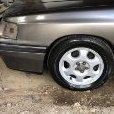-
Upcoming Events
No upcoming events found
-
Member Statistics
-
Who's Online 0 Members, 0 Anonymous, 33 Guests (See full list)
- There are no registered users currently online
-
Current Donation Goals
-
Donate towards Forum running costsRaised $0.00
-
-
Posts
-
It came from when Chris Bishop said we could pay for RUCs monthly via an app.
-
Managed to flash a microcontroller module in a generic test rig I brought with spring loaded sides. It worked fine except that you need to time the grounding of the boot pin and reset at the same time. The board has a button to do that automatically but the first flash timing doesn’t match. After the first flash though the automatic button works consistently. Flashed another blank module that was already soldered to my pcb and its far from ideal too. The 4 pin for power, ground, send and receive connector was great initially when pin header was soldered in for prototyping. For assembly into a case it can’t have the header fitted. I ordered a spring loaded 4 pin pad to deal with this and clipped it on with a clothes peg. But the fast timing on first flash it needs the ground wire and power to be connected after the serial starts. I split power and ground out and it works ok now. So once the pcb is final I’ll likely need to make a test rig pcb that lines up with all the serial and power points. That will have pogo pin so you just place the real pcb on top with a little pressure it’ll connect. Otherwise it wastes 2-5 minutes trying to get it connected and flashed. It will also reduce cost allowing the led that indicate different voltages to be left off each pcb and only fitted to the test rig. After flashing I left the pcb running in wifi setup mode for hours. The heat from the voltage regulator was the highest as expected. It was still only warm and efficiently spreading heat into the pcb via the large copper pad and holes that were added for exactly that purpose. I retested again the next day and max regulator temp was 42.4c and 24c room temp. Microcontroller was 41c with wifi idle. Wifi takes 300mA max where no wifi drops as low as 40mA so this should be the maximum power use. Worked more on another pcb design for a different canbus project. Between design and selection or parts it takes a lot of time. Seems making sure there will always be stock when you don’t use basic parts is important. Adding little extras to the pcb to allow flexibility will hopefully be worthwhile. Been trying to find my spare steer wheel controls as I can’t remember what the button inside where. They feel like silicon pads and not switches. So that could be a nice quick project to have a board made up with nice micro switches.
-
So many little things still need work. While not needed for functionality I’m making a testing portal over wifi for testing the connections to canbus and led display etc. This will allow both initial testing and end users to check the device is fully functional and test any repairs or changes they make. There are many variations in how RPM is encoded in canbus messages and they will need to be added as options in settings and the above test portal. Mounting is another area that has to be tested as so far it’s been black foam tape. There are 2 places for a mount either using alloy riv-nuts or square nuts fixed with resin. The riv-nuts need with only 2 of the 4 petals so they all need cutting before installing which is slow and they take up a lot of space. The other option is square nuts that are glued in place and I have used them in the past with god results. The other advantage is that it leaves enough space for a layer of protection so if a longer bolt is used it will have some cushioning before it hits the electronics. Most of the testing side came from a way to reduce cost by using a more traditional tube case with a smaller number of LEDs.
-
Forgot to note that ordered pcb in different colours to see what the difference is. Each colour flows differently and has a minimum width between component pads it can flow, with green being best. I tried white and blue this time as the text colour is white on green and blue, but black on the white board. The black text is not as thick or clear as white. The white text is close on both but still best on green. Worked out option to add a buzzer to play annoying tone when shift light is flashing. Overall little progress, spent a few days doing custom apple HomeKit projects for environment monitoring. This was an early project that was put on hold as the person who wanted it had to make a bunch of choices. It has some value for automotive where the car when it arrives home connects to apple homekit and sends data. Depending on the car it could be milage and fuel use or just last battery voltage and temps. Realised I need a better test rig as laptop and stack of usb canbus dongles isn’t the best. So made some initial plans for a stand-alone canbus network similar to the below but with SD card for adding real logs. Plus web portal to setup the canubus IDs for the buttons for lights, gears and pedals to emulate along with a rpm and speed estimate. It will have a obd2 plug with 12v power so it is easy to test devices. https://www.aliexpress.com/item/1005009344611851.html Have some work for custom canbus gauge cluster upgrades for older Subarus that have no obd2 or canbus but run aftermarket ecus. All stealth or OEM+ look inside the stock cluster.
-
Just ice the inter cooler for the power run on the dyno. It’s just a piece of paper, it doesn’t show gearing or real performance anyway.
-
-
Latest Products
-
Popular Contributors
-
Forum Statistics
-
Total Topics41k
-
Total Posts574.5k
-







